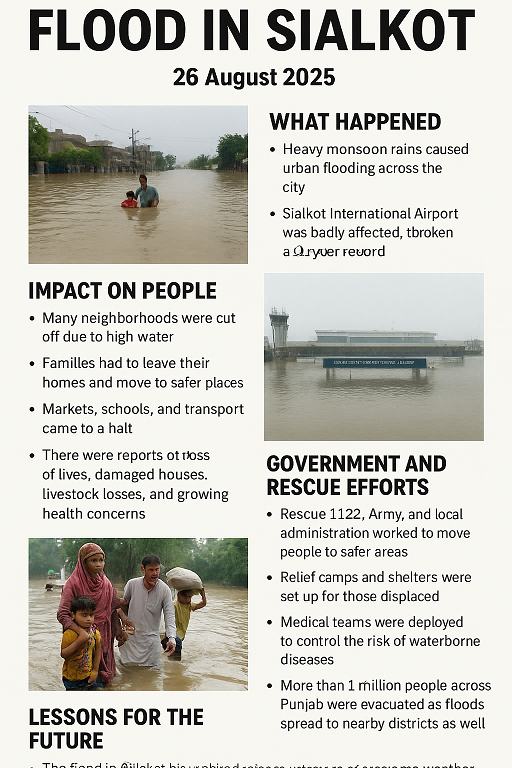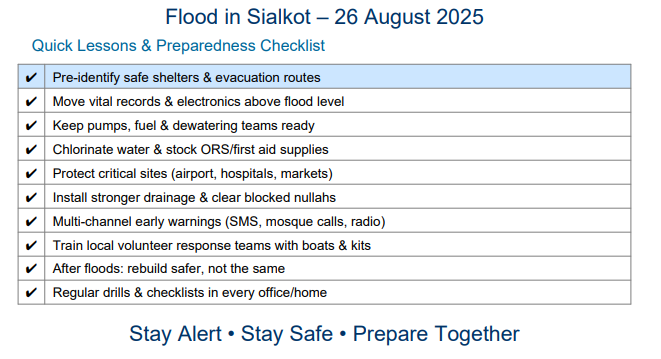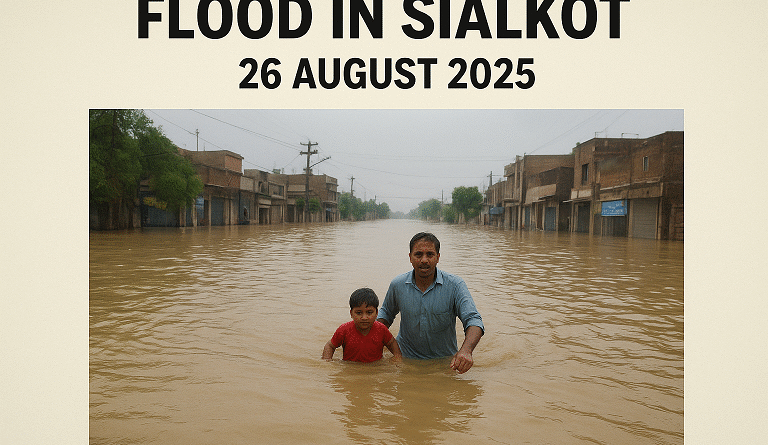Flood in Sialkot – 26 August 2025
by Muhammad Mobasher Ali
On 26 August 2025, the city of Sialkot faced one of the heaviest rainfalls in its history. Within just 24 hours, the city received around 365 mm of rain, breaking a 49-year record. Streets quickly turned into rivers, and in many areas the water rose up to chest level. Flood in Sialkot – 26 August 2025 taken 85 villages almost with life ruining position, forced people to navigate to safe place leaving the valuables at stake .

What Happened
- Heavy monsoon rains caused urban flooding across the city.
- Sialkot International Airport was badly affected, with floodwater entering the terminal and suspending flight operations.
- The River Chenab also swelled dangerously, and the Pakistan Meteorological Department warned of an exceptional high flood level at Marala, Khanki, and Qadirabad barrages.
Impact on People
- Many neighborhoods were cut off due to high water.
- Families had to leave their homes and move to safer places.
- Markets, schools, and transport came to a halt.
- There were reports of loss of lives, damaged houses, livestock losses, and growing health concerns due to standing water inside City.
Government and Rescue Efforts
- Rescue 1122, Army, and local administration worked to move people to safer areas.
- Relief camps and shelters were set up for those displaced.
- Medical teams were deployed to control the risk of waterborne diseases.
- More than 1 million people across Punjab were evacuated as floods spread to nearby districts.
Lessons for the Future
The flood in Sialkot showed how vulnerable the city is to extreme weather. It highlights the need for:
- Better drainage systems in urban areas.
- Stronger flood defenses along the River Chenab.
- Early warning systems that reach every citizen.
- Planning to protect critical places like airports, hospitals, and industries.
👉 In short, Sialkot’s Flood of 26 August 2025 was not just a local disaster, but it has taken Punjab District to Crisis. It is a reminder that Pakistan must prepare better for climate change and future extreme rains.


